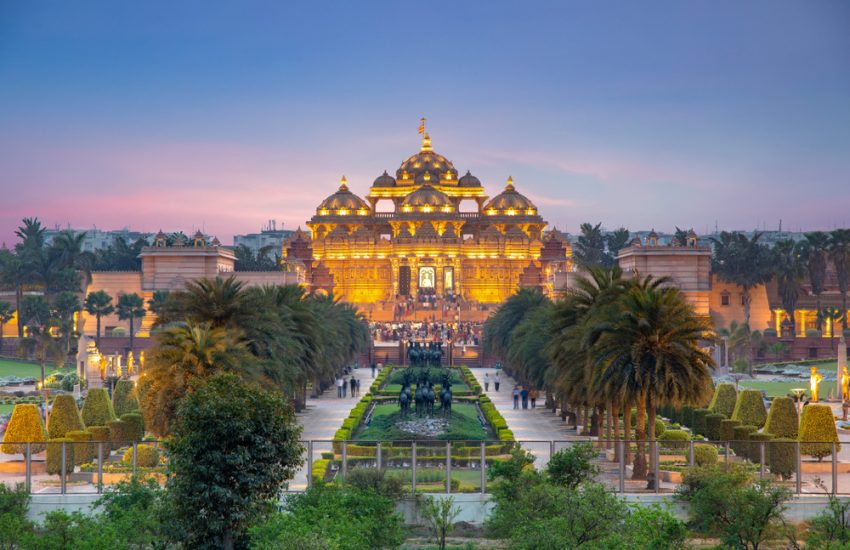India, often referred to as a subcontinent, boasts a remarkably diverse landscape that encompasses everything from towering Himalayan peaks to sun-kissed coastal shores. Spanning over 3.2 million square kilometers, India’s varied terrain offers a plethora of natural wonders, each with its own unique charm and allure. In this article, we embark on a journey through India’s diverse landscapes, exploring the majestic mountains, lush valleys, expansive plains, and pristine beaches that define the country’s natural beauty.
Himalayan Majesty
The Himalayas, the world’s highest mountain range, stand as a majestic symbol of India’s natural grandeur. Spanning across the northern border of the country, the Himalayas are home to some of the highest peaks in the world, including Mount Everest and Kanchenjunga. Travelers flock to destinations like Himachal Pradesh, Uttarakhand, and Jammu and Kashmir to explore the snow-capped peaks, lush valleys, and serene lakes of the Himalayan region. Whether trekking through the picturesque trails of Manali, skiing in Gulmarg, or meditating in the tranquil surroundings of Dharamshala, the Himalayas offer endless opportunities for adventure and spiritual rejuvenation.
Enchanting Valleys and Plateaus
Nestled amidst the foothills of the Himalayas and the Western Ghats, India’s valleys and plateaus are a haven of natural beauty and biodiversity. The lush greenery of places like the Kashmir Valley, Kangra Valley, and Munnar captivates travelers with their panoramic vistas, cascading waterfalls, and verdant tea plantations. The Deccan Plateau, with its rugged terrain and ancient rock formations, offers a stark contrast to the verdant valleys, providing opportunities for exploration and adventure. Travelers can embark on scenic drives, hiking trails, and wildlife safaris to immerse themselves in the tranquility and charm of India’s enchanting valleys and plateaus.
Bustling Plains and River Basins
Stretching across the heart of India, the vast plains and river basins are the lifelines of the country, supporting agriculture, industry, and civilization. The fertile plains of the Ganges, Brahmaputra, and Yamuna rivers are home to bustling cities, historic monuments, and cultural landmarks. Travelers can explore the iconic cities of Delhi, Kolkata, and Varanasi, each with its own rich history, architectural heritage, and culinary delights. Cruising along the Ganges River, visiting ancient temples and forts, and witnessing traditional festivals offer glimpses into the vibrant culture and heritage of India’s plains and river basins.
Spectacular Coastlines and Islands
India’s expansive coastline stretches over 7,500 kilometers, offering a diverse array of beaches, islands, and coastal ecosystems. From the palm-fringed shores of Goa and Kerala to the pristine beaches of Andaman and Nicobar Islands, India’s coastlines are a paradise for beach lovers and water enthusiasts. Travelers can indulge in water sports like surfing, snorkeling, and scuba diving, explore coral reefs and marine life, or simply relax on sun-drenched beaches. The Andaman Islands, with their turquoise waters, white sandy beaches, and lush rainforests, are a hidden gem waiting to be discovered by adventurous travelers seeking seclusion and tranquility.
Desert Wilderness and Arid Landscapes
In the northwest of India lies the Thar Desert, one of the largest arid regions in the world, known for its vast stretches of sand dunes, colorful villages, and vibrant culture. Travelers can embark on camel safaris, camp under the stars, and witness mesmerizing sunsets over the desert horizon. The desert cities of Jaisalmer, Jodhpur, and Bikaner offer glimpses into Rajasthan’s royal heritage, with their majestic forts, ornate palaces, and bustling bazaars. Beyond the desert, India’s arid landscapes are home to unique ecosystems, wildlife sanctuaries, and ancient civilizations, providing opportunities for exploration and discovery.
Preservation and Conservation Efforts
While India’s diverse landscapes offer unparalleled beauty and natural resources, they also face threats from environmental degradation, deforestation, and climate change. Recognizing the importance of preserving its natural heritage, India has implemented various conservation initiatives and sustainable development projects. National parks, wildlife sanctuaries, and biosphere reserves protect endangered species and habitats, while eco-tourism initiatives promote responsible travel practices and community involvement. By supporting conservation efforts and practicing sustainable tourism, travelers can help preserve India’s diverse landscapes for future generations to enjoy.
Conclusion
India’s diverse landscapes, from the towering Himalayas to the sun-drenched beaches, showcase the country’s rich natural heritage and cultural diversity. Whether trekking in the mountains, cruising along rivers, or lounging on beaches, travelers can immerse themselves in the breathtaking beauty and tranquility of India’s varied terrain. As stewards of the environment, it is our responsibility to preserve and protect these natural wonders for future generations to cherish and enjoy. By exploring India’s diverse landscapes with respect and appreciation, travelers can embark on a journey of discovery and wonder in one of the world’s most captivating destinations.
More articles: Beach Bliss: Coastal Escapes and Island Adventures in Cambodia

